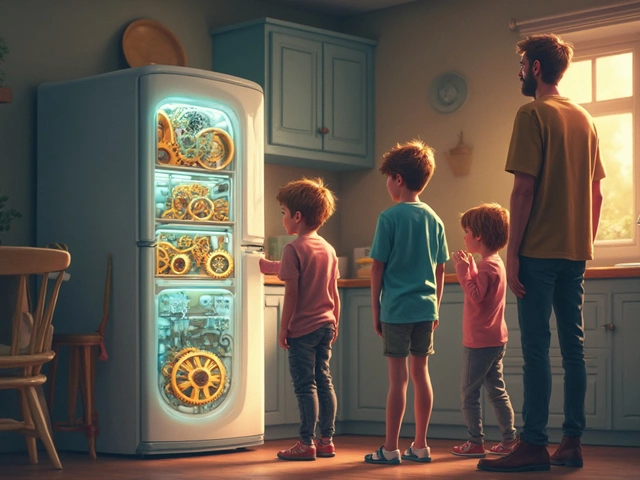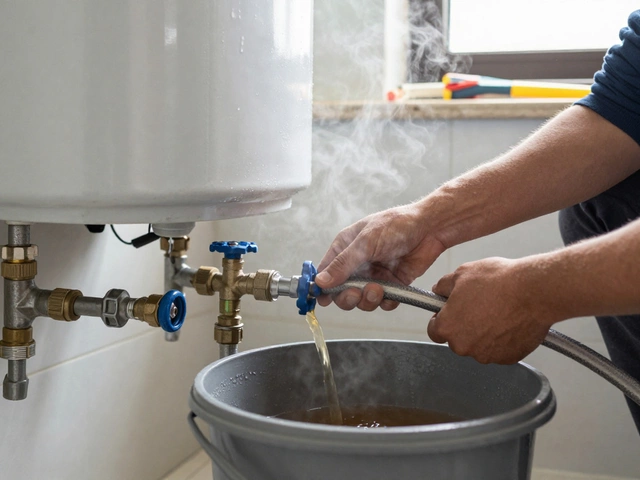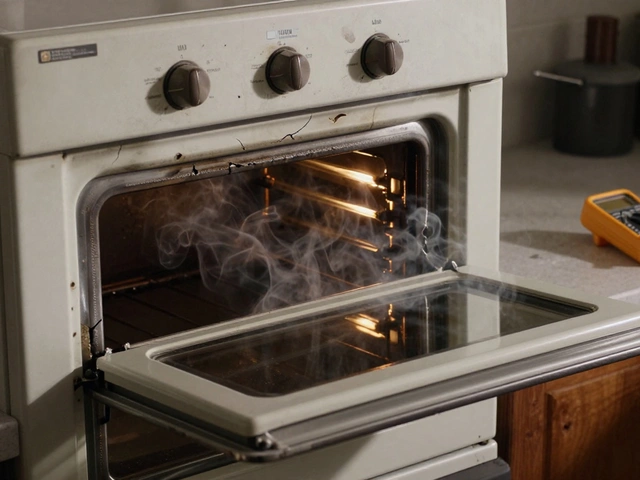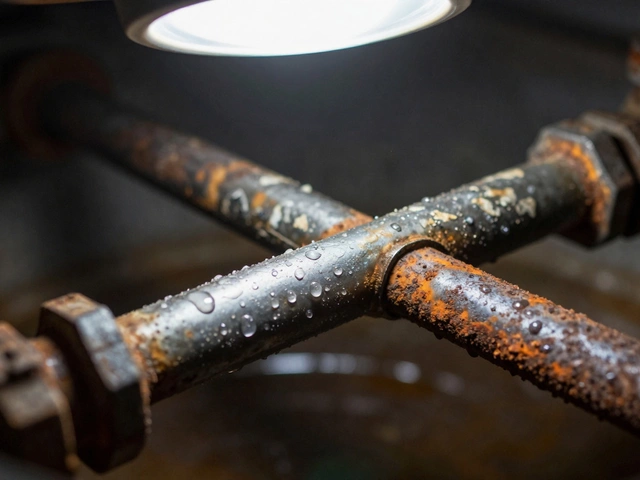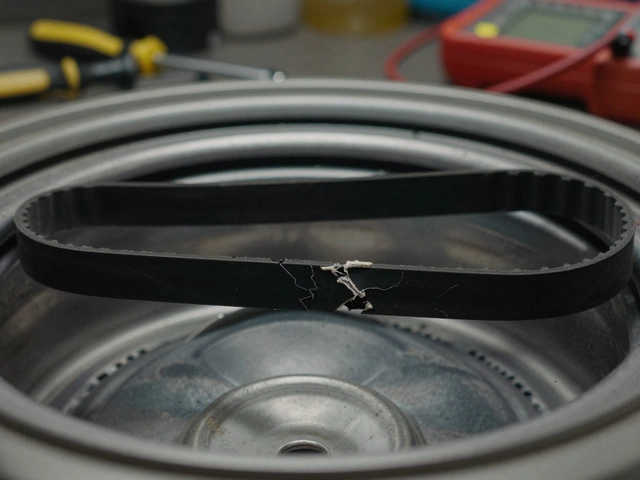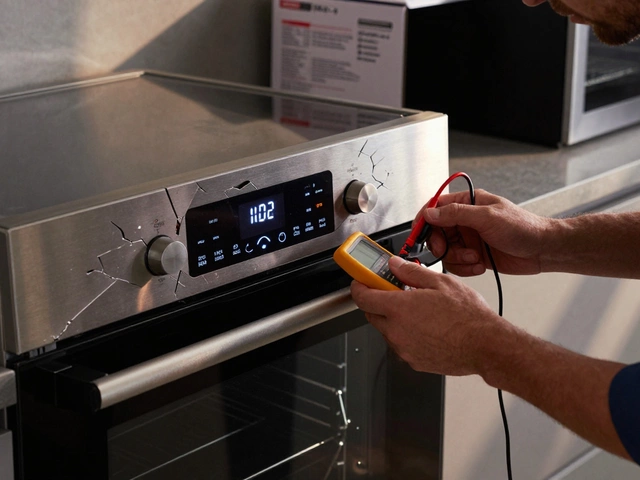Ever pressed start on the dishwasher and wondered what actually goes on inside? You're not alone. Most of us just want our appliances to work, but knowing the basics can actually save you time, headaches, or even money when something stops working.
Appliances aren't as mysterious as they seem. At their core, most work by relying on a mix of power (think electricity or gas), a few key moving parts, and some smart control systems. Getting familiar with what happens under the hood gives you a leg up on small fixes and helps you spot real problems before they turn into expensive repairs.
If you’ve ever pulled out the fridge plug just to reset it (and it worked), you’ve already dabbled in the basics of appliance troubleshooting. Stick around—learning a bit more about how these machines tick means you're less likely to get ripped off if you ever need service. Plus, you’ll know what sounds and glitches you can safely ignore, and which ones need attention.
- Getting to Know Your Appliance
- What Happens Inside When You Hit Power
- Key Parts Most Appliances Share
- Common Issues and What They Mean
- Simple Checks Before Calling for Help
Getting to Know Your Appliance
If you peek behind your stove or under your washing machine, you’ll see a mix of wires, pipes, and sometimes weird noises. It looks complicated, but every appliance follows the same basic rules: it takes in energy, controls where it goes, and uses it to get the job done—like cooling your milk or spinning your socks.
One thing you notice? Modern appliances pack a lot of tech, even in something simple like a toaster. The average home in the U.S. in 2024 had 10 major appliances, and brands are putting sensors and digital displays everywhere now. But even the fanciest model is still built around the same old functions: heat, cool, pump, spin, or clean.
It always helps to know what year your appliance was made and its basic stats. Most appliances have a metal plate or sticker inside a door or on the back with a model number, serial number, and sometimes energy info. Here’s what those labels typically tell you:
| Label | What It Means |
|---|---|
| Model Number | The exact version of your machine—useful when looking for parts. |
| Serial Number | Unique code so service techs can pull up warranty info. |
| Energy Label | Shows how efficient your appliance is (more stars = cheaper to run). |
| Manufacture Date | Lets you know how old your appliance really is. |
If you’re standing in front of a blinking panel or a sweating compressor, here’s what you should do first:
- Write down the model and serial numbers in your phone or notebook.
- Read the quick start in the manual—most common issues show up there.
- Get familiar with basic controls: power buttons, reset, or cycle selectors save headaches.
Don’t forget to check your appliance’s warranty. Some repairs or even new parts might still be covered—many brands now offer coverage longer than just a year, especially for major stuff like the compressor in a fridge.
What Happens Inside When You Hit Power
Hit the power button and things move fast. Electricity surges into the appliance, kicking off a chain reaction, and every part does its job almost instantly. Take your washing machine for example. Once you start it, the control board sends signals to the valves, motor, and pump. Water fills up first, then the drum spins. Sensors quietly check water level and temperature, and that’s how your clothes come out clean without you having to watch every step.
Every appliance shares this same basic groove—an energy source, a brain (the control board), and the parts that do the heavy lifting. Fridges turn on their compressor and send refrigerant cycling. Dishwashers release water and heat up with a coil, then knock food off with spinning sprayer arms. Even your microwave is basically sending electrical signals through a magnetron, blasting food molecules until they vibrate and get hot.
Curious about the actual flow inside different appliances? Here’s a quick overview:
- Fridge: Compressor kicks on, coolant cycles, inside gets cool as air circulates.
- Dishwasher: Control board opens water valve, heater warms it up, sprayer arms blast and rinse.
- Dryer: Motor spins drum, heating element warms air, moisture sensor decides when it’s dry.
- Microwave: Control board fires up magnetron, microwaves heat food quick and even.
Modern appliances usually have a ton of sensors—door switches, temperature readers, and sometimes even WiFi chips for smart features. These not only keep things safe but also help adjust cycles for better efficiency.
Check out some average cycle lengths, just to get a feel for how the inside works:
| Appliance | Average Cycle Time |
|---|---|
| Washing Machine | 30-60 minutes |
| Dishwasher | 1-2 hours |
| Dryer | 30-45 minutes |
| Microwave | 2-10 minutes |
If you listen closely after you hit start, you’ll often hear a click or a hum—those are relays and motors jumping to life. It’s those tiny, split-second actions that make your appliance do what you need, no magic involved. Next time your dryer runs, just think about all the sensors and gadgets making sure your socks don’t come out still soggy.
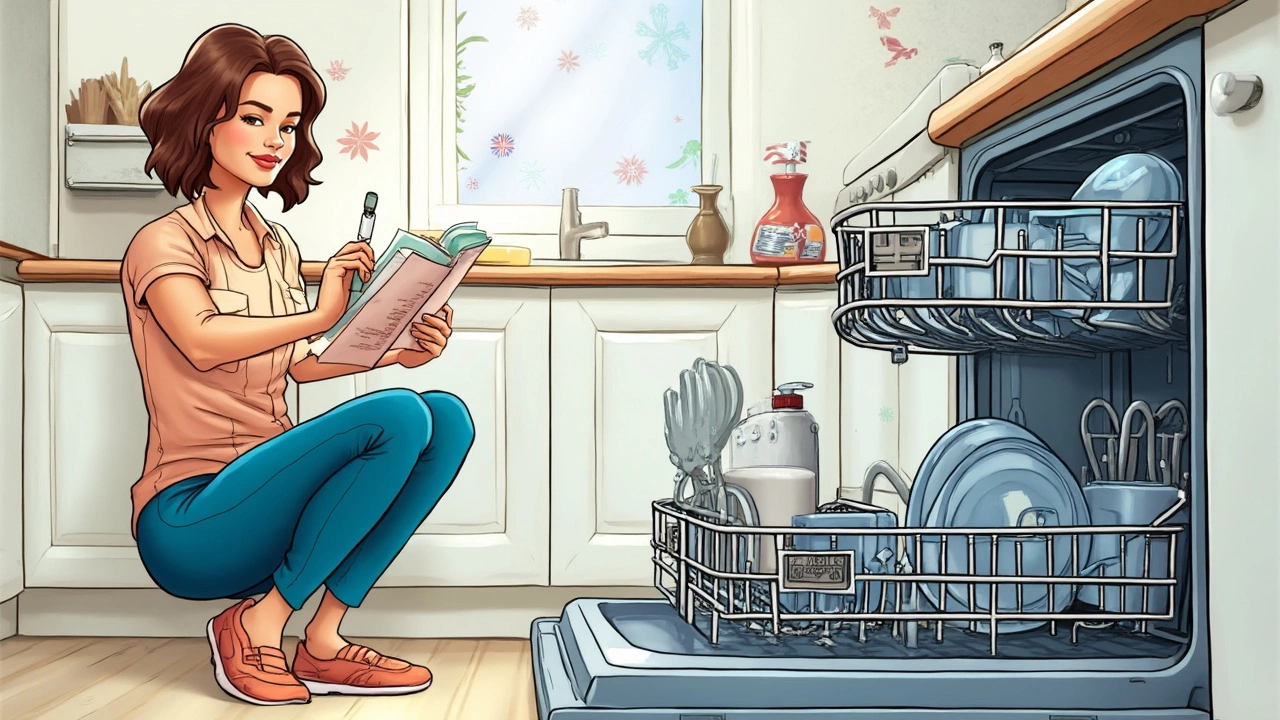
Key Parts Most Appliances Share
Even though your blender and your dryer don’t look alike, when you break them down, most household appliances rely on a handful of the same core parts. Knowing these makes it so much easier to talk to a repair tech or figure out simple fixes on your own. Here are the main pieces you’ll run into again and again:
- Power Source: Almost every appliance needs either electricity, gas, or water to run. Electric cords, gas lines, or water hoses need to be checked if your machine suddenly won’t turn on or do its job.
- Control Panel: This is that set of buttons, dials, or even touchscreens where you give all your commands. Faulty buttons or error lights are often the first sign something’s off.
- Motors and Pumps: Whether it’s spinning a drum, moving water, or turning blades, small but mighty motors or pumps handle most of the heavy lifting inside appliances. If your machine just hums but doesn’t work, these might be the culprits.
- Sensors and Switches: Sensors track things like temperature, moisture, or whether a door is open or closed. They keep your clothes from over-drying or stop your washer if the door’s not latched. Bad sensors are a common issue when appliances behave weirdly.
- Heating Elements or Coolers: Think toaster coils, oven elements, or fridge compressors. They heat or cool, pretty much taking care of every temperature-related job your house needs.
You’ll find most appliances, no matter how different they seem, rely on these parts. Spotting the right one can help you solve minor mishaps—or at least sound informed if someone tries to sell you an expensive repair.
| Part | Common Issues | Percentage of Appliance Breakdowns* |
|---|---|---|
| Motor | Won't start, weird noises | 22% |
| Control Panel | Buttons not responding, error flashes | 17% |
| Sensors/Switches | Cycles don’t end, safety errors | 28% |
| Heating/ Cooling Element | Not heating/cooling, no temperature change | 20% |
| Power Supply | No response, random shutdowns | 13% |
*Based on 2024 data from major appliance repair companies in the US.
The biggest tip? If you learn to spot trouble in these essential areas, most of the time you’ll be on top of your appliance problems long before things get serious or super costly.
Common Issues and What They Mean
Appliances usually give warning signs before they truly break down. Recognizing these little hints can save you from bigger, pricier problems down the road. Let’s dig into what some of the most common hiccups actually signal, so you know if the issue is a quick DIY fix or a sign it’s time for a pro.
- Strange noises: Thumping from your washing machine? Clicking in your fridge? Odd sounds typically mean something’s either loose or wearing out. For washers and dryers, it could be anything from a loose coin to worn-out bearings. In fridges, rattling usually points to fan blades or compressor issues.
- Not starting or random shutdowns: If your appliance won’t even fire up or cuts off mid-cycle, check the obvious stuff first—like if it’s plugged in or if the circuit breaker tripped. If that’s all good, the control board or power supply could be failing.
- Water leaks: Seeing water next to the dishwasher or washer isn’t normal. It’s often due to a clogged filter, worn door seal, or a hose that’s got a crack. Ignoring leaks can lead to electrical shorts or mold problems fast.
- Funky smells: Burnt or musty smells are never good. Dishwashers often get stinky if food particles build up in the filter. A burning odor from a dryer? Unplug it immediately—lint in the ducts can turn into a real fire risk.
- Poor performance: Maybe your dryer runs forever, or your fridge can’t keep ice cream solid. Usually, this means a clogged vent, dirty condenser coils, or a failing heating or cooling element.
You’re not alone dealing with these problems. According to a 2024 survey from Consumer Reports, the most common appliance failures at home are as follows:
| Appliance | Most Common Problem | Percentage of Owners Reporting |
|---|---|---|
| Washing Machine | Not spinning/Draining | 22% |
| Dishwasher | Not cleaning properly | 18% |
| Refrigerator | Temperature issues | 19% |
| Dryer | Not heating | 15% |
If you’re staring down a broken appliance, take a breath before panicking. Many fixes start with simple steps like cleaning a filter, checking a hose, or unplugging and plugging the machine back in to reset the system. Sometimes, it’s as easy as making sure a safety latch is actually closed. But if your appliance keeps acting up after these steps, or you notice burnt parts or exposed wires, don’t risk it—it’s time to call a pro.
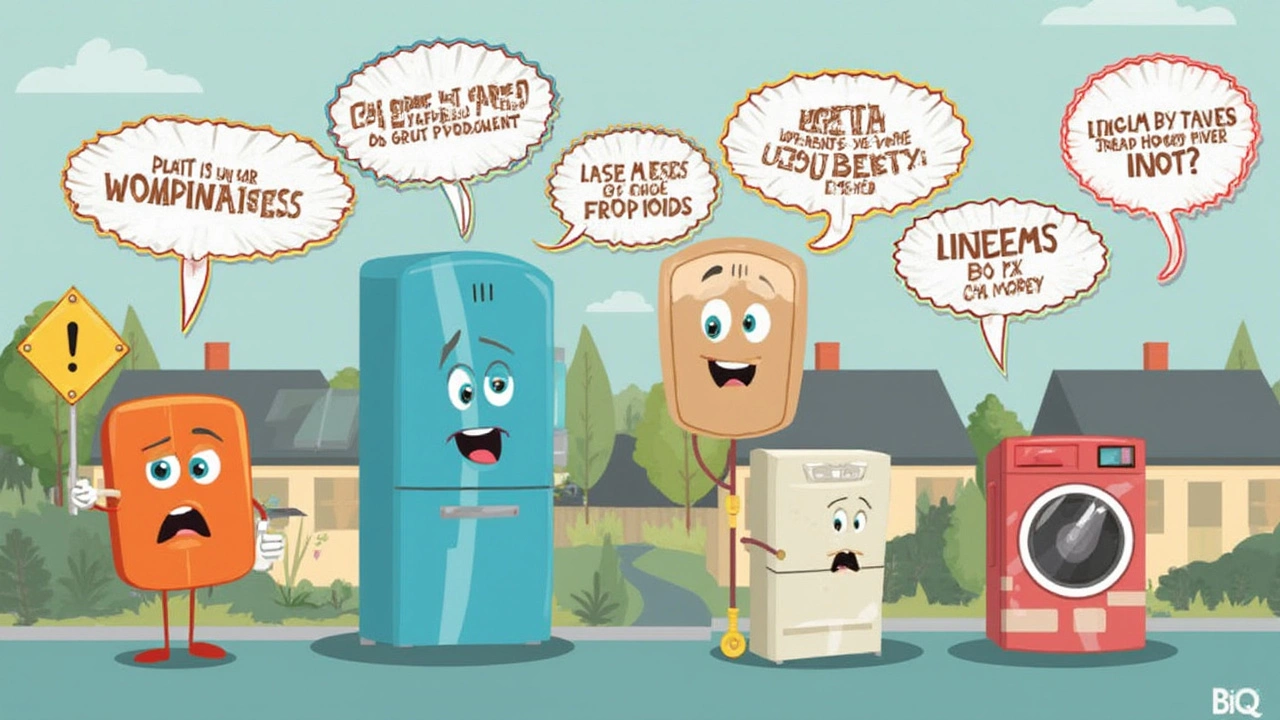
Simple Checks Before Calling for Help
Before you pick up the phone and call in a pro, there are a few easy checks you should always run. It sounds obvious, but a lot of service calls end up being for stuff you can fix in minutes. Honestly, you don’t want to waste cash or time on a problem you could have sorted yourself.
Start with the basics. Is the appliance plugged in tight? You’d be surprised—according to a 2024 study from the Appliance Service Association, nearly 18% of emergency visits for ‘dead’ appliances are fixed with a simple plug-in or by resetting a tripped breaker. Next, make sure the power outlet is working. You can check it by plugging in something else, like a lamp or charger.
If you’re dealing with a appliance that runs on water—think dishwashers or washing machines—double-check the water supply valve. It’s not rare for someone to nudge it off by accident or for it to get stuck halfway. Also, inspect hoses for kinks or signs of leaking. For fridges and freezers, look for blocked vents or a packed freezer. Poor airflow can cause cooling problems and is usually fixed by just rearranging food or clearing ice buildup.
Here’s a quick checklist you can run through before calling for help:
- Check power—plugged in and the outlet works
- Look at circuit breakers and reset if needed
- Inspect hoses and water valves for kinks or blockages
- Ensure doors/lids are closed tight (some appliances won’t run if open)
- Empty lint traps (dryers) and filters (dishwashers)
- Listen for unusual noises—clicks, clunks, or nothing at all
If your appliance flashes an error code, snap a photo and look it up in the manual or online. Some codes point straight to the fix—like "E24" on a Bosch dishwasher just means a blocked filter or pump.
It can help to keep track of how often things go wrong, too. Here’s a table of common appliance issues and what often causes them, based on a 2024 review of over 20,000 service calls:
| Appliance | Most Common Issue | DIY Fix Rate (%) |
|---|---|---|
| Fridge | Not cooling | 32 |
| Washing Machine | Won't drain | 28 |
| Dishwasher | Won't start | 41 |
| Dryer | No heat | 24 |
If you go through the list above and nothing works, that’s the time to call in expert appliance service. Chances are, you’ll already know exactly what’s going wrong—or you’ll have ruled out the basics and saved everyone a lot of hassle.




